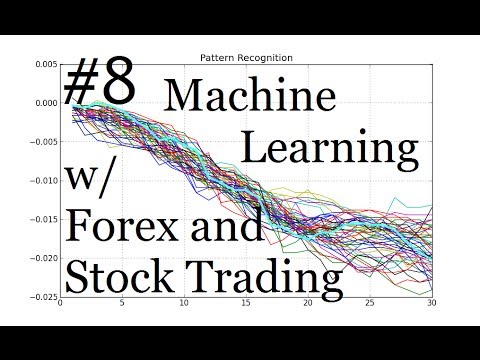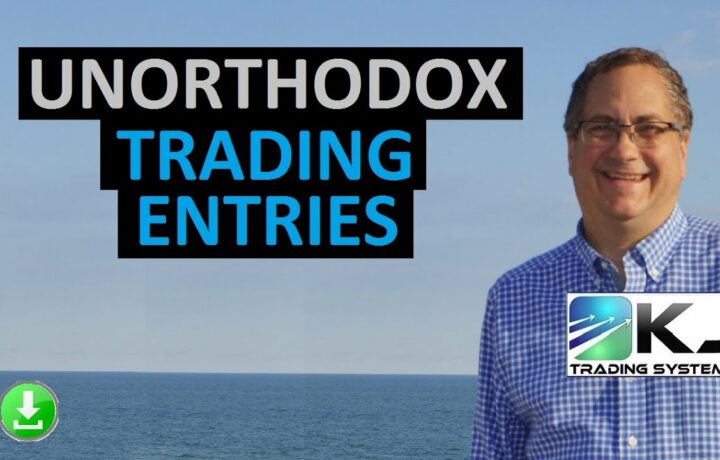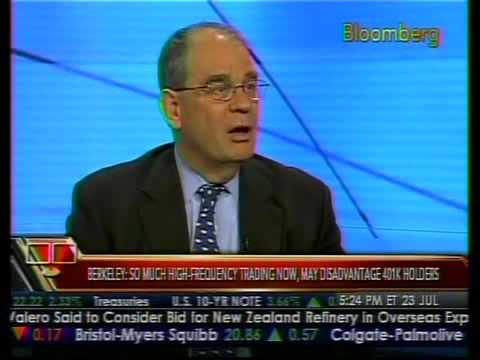Get Trending Vids Top Searched Forex Algorithmic Trading With Zipline, Thomas Wiecki – Algorithmic Trading with Zipline.
View slides for this presentation here:
PyData Berlin 2014
Python is quickly becoming the glue language which holds together data science and related fields like quantitative finance. Zipline is a BSD-licensed quantitative trading system which allows easy backtesting of investment algorithms on historical data. The system is fundamentally event-driven and a close approximation of how live-trading systems operate. Moreover, Zipline comes “batteries included” as many common statistics like moving average and linear regression can be readily accessed from within a user-written algorithm. Input of historical data and output of performance statistics is based on Pandas DataFrames to integrate nicely into the existing Python eco-system. Furthermore, statistic and machine learning libraries like matplotlib, scipy, statsmodels, and sklearn integrate nicely to support development, analysis and visualization of state-of-the-art trading systems. Zipline is currently used in production as the backtesting engine powering Quantopian.com — a free, community-centered platform that allows development and real-time backtesting of trading algorithms in the web browser.
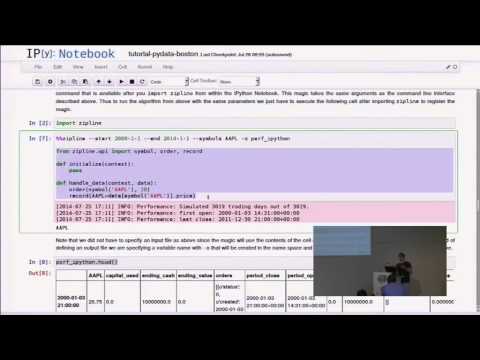
Forex Algorithmic Trading With Zipline, Thomas Wiecki – Algorithmic Trading with Zipline.
Do Quants require CFA?
CFA/FRM are both used in monetary modelling or danger management, but they don’t have much importance to the work of Quantitative Analyst. … I indicate, the CFA program specifically is wonderful if you intend to find out about finance, but it will not help you out with the quantitative analysis abilities needed to work as a quant.
Recommended Book for Automated Trading
Professional Automated Trading: Theory and Practice
Book by Eugene A. Durenard
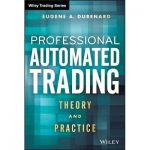 An insider’s view of how to develop and operate an automated proprietary trading network Reflecting author Eugene Durenard’s extensive experience in this field, Professional Automated Trading offers valuable insights you won’t find anywhere else. read more…
An insider’s view of how to develop and operate an automated proprietary trading network Reflecting author Eugene Durenard’s extensive experience in this field, Professional Automated Trading offers valuable insights you won’t find anywhere else. read more…
Originally published: 2013
Author: Eugene A. Durenard
What is Artificial Intelligence Trading?
Artificial Intelligence trading is a process for performing orders making use of automated and pre-programmed trading directions to make up variables such as cost, timing and volume. An algorithm is a set of instructions for resolving a trouble. Computer formulas send out small portions of the complete order to the marketplace in time.
Artificial Intelligence trading takes advantage of intricate solutions, integrated with mathematical versions and human oversight, to make decisions to get or sell monetary safeties on an exchange.
Artificial Intelligence investors commonly take advantage of high-frequency trading technology, which can enable a company to make 10s of hundreds of trades per second. Automated trading can be used in a wide range of scenarios consisting of order implementation, arbitrage, and trend trading approaches.
Understanding Artificial Intelligence Trading
Making use of formulas in trading enhanced after computerized trading systems were introduced in American monetary markets throughout the 1970s. In 1976, the New York Stock Exchange introduced the Designated Order Turnaround (DOT) system for routing orders from investors to specialists on the exchange floor. In the adhering to years, exchanges boosted their abilities to approve electronic trading, and by 2010, upwards of 60 percent of all trades were implemented by computer systems.
Author Michael Lewis brought high-frequency, Automated trading to the public’s focus when he released the very popular publication Flash Boys, which recorded the lives of Wall Street investors and entrepreneurs that aided develop the companies that pertained to specify the framework of electronic trading in America. His publication argued that these companies were engaged in an arms race to develop ever before faster computer systems, which can communicate with exchanges ever before quicker, to gain advantage on rivals with speed, making use of order kinds which profited them to the hinderance of ordinary capitalists.
Do-It-Yourself Artificial Intelligence Trading
Over the last few years, the method of do-it-yourself Automated trading has actually become widespread. Hedge funds like Quantopian, for instance, crowd source formulas from amateur designers that complete to win commissions for composing the most profitable code. The method has actually been enabled by the spread of broadband Internet and the development of ever-faster computer systems at reasonably affordable prices. Systems like Quantiacs have actually sprung up in order to serve day investors that want to attempt their hand at Automated trading.
An additional emerging technology on Wall Street is machine learning. New developments in artificial intelligence have actually enabled computer system designers to establish programs which can improve themselves with an iterative process called deep discovering. Investors are developing formulas that depend on deep learning to make themselves extra profitable.
Benefits and Negative Aspects of Automated Trading
Automated trading is primarily used by institutional capitalists and large broker agent houses to reduce costs related to trading. According to study, Automated trading is especially beneficial for large order sizes that may consist of as high as 10% of overall trading volume. Typically market makers utilize Automated trades to produce liquidity.
Artificial Intelligence trading also enables faster and easier implementation of orders, making it appealing for exchanges. In turn, this indicates that investors and capitalists can swiftly schedule earnings off small changes in cost. The scalping trading method generally utilizes formulas due to the fact that it involves rapid buying and selling of safeties at small cost increments.
The speed of order implementation, a benefit in regular conditions, can end up being a trouble when a number of orders are implemented concurrently without human treatment. The flash accident of 2010 has actually been criticized on Automated trading.
An additional drawback of Automated trades is that liquidity, which is developed with rapid buy and sell orders, can vanish momentarily, eliminating the modification for investors to profit off cost changes. It can also cause instantaneous loss of liquidity. Study has actually discovered that Automated trading was a significant consider causing a loss of liquidity in currency markets after the Swiss franc ceased its Euro peg in 2015.
Automated trading is the use of process and rules-based formulas to use approaches for performing trades.
It has actually expanded considerably in popularity given that the early 1980s and is used by institutional capitalists and big trading companies for a variety of functions.
While it supplies benefits, such as faster implementation time and decreased costs, Automated trading can also worsen the marketplace’s unfavorable tendencies by causing flash collisions and prompt loss of liquidity.
Get Popular Videos Top Searched Forex Algorithmic Trading With Zipline and Financial market news, analysis, trading signals and Foreign exchange investor reviews.
Forex Caution:
Our solution consists of items that are traded on margin and carry a threat of losses in excess of your deposited funds. The items may not be suitable for all capitalists. Please make certain that you totally understand the risks included.

